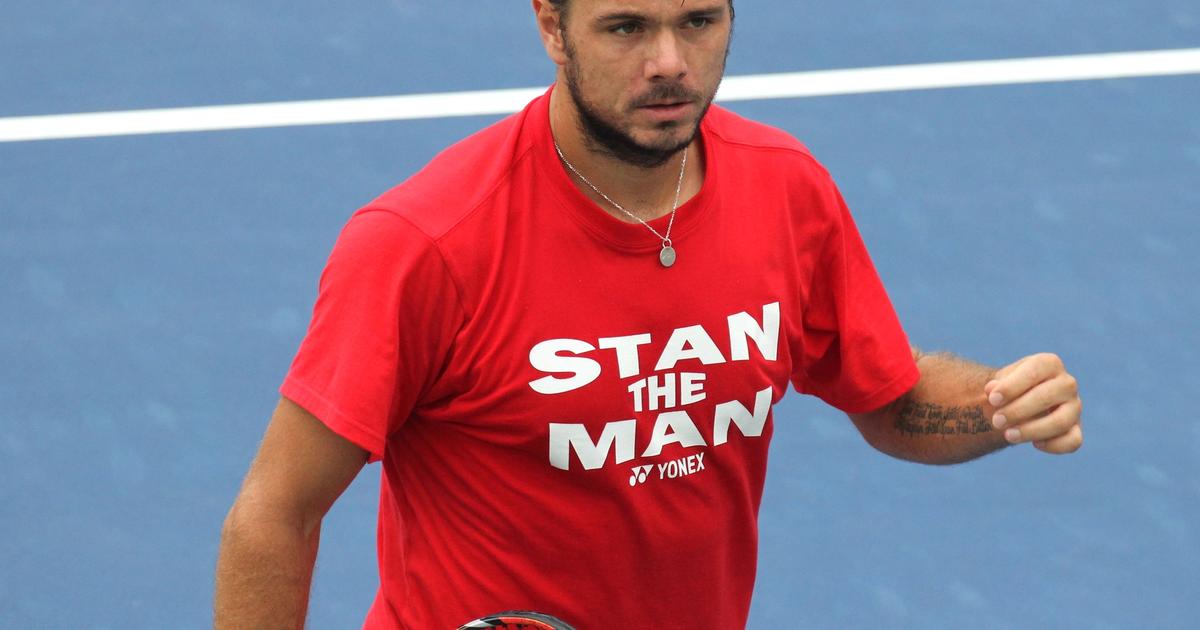Three-time Grand Slam champion and former world #3 Stan Wawrinka’s miserable 2018 continued after a frustrating 4-6 7-6 6-7 loss to Donald Young. It leaves Wawrinka with just six wins for the season, and without back-to-back victories since February. Though he was able to show flashes off his best tennis, impressively rallying from behind in the second set tiebreak and hitting one magnificent backhand drive volley, there looked to be more problems than solutions for Wawrinka.
Indeed, he was at one point heard telling his box that he was trying everything, but missing. It was about as accurate a summary of his performance as possible. Time and time again Wawrinka pulled the trigger too early, but even when he looked to be in the right position to hit a winner he was missing more than he is used to. It’s currently looking like a long way back to the top for the man now ranked 198th in the world. But what’s holding him back?
Inconsistent at the best of times
What separates Andy Murray and Stan Wawrinka has become a topic for discussion in the tennis world of late as the status of the Big Four has come under question. That is partly the result of the achievements of Roger Federer, Rafael Nadal and Novak Djokovic dramatically outstripping the Scot’s, commendable though they are. But it’s a question that mostly arose thanks to Wawrinka’s sudden ascension to the status of Grand Slam champion and his having matched Murray’s Major haul.
But the answer is as simple as consistency. Murray has been challenging for the sport’s biggest titles regularly over the past decade, Wawrinka hasn’t been. Murray may have won the same number of Majors as the Swiss, but he’s appeared in seven more finals. He’s also won 14 Masters titles to Wawrinka’s solitary triumph, and has 45 titles to Wawrinka’s 16. And whilst Murray has ascended to the top of the rankings, Wawrinka is yet to crack the top two.
Even during his Grand Slam winning years, Wawrinka was prone to surprising losses. At Roland Garros in 2014 he arrived as the reigning Australian Open champion only to lose in the first round to Guillermo Garcia Lopez. Losses like the one he took at the hands of Donald Young have always been part of his game. They may be happening with more regularity now than in previous years but his path back to his best was never going to be like that of his great rivals, because his best was never like theirs.
Hit big or go home
The source of his inconsistency can be found in his aggressive game style. When Wawrinka is at his best, he’s a hammer of a man, able to hit through the best defences in the game with apparent ease. Indeed, his performance in taking apart Djokovic in the French Open final in 2015 is arguably the best of this generation, and that’s a mighty high bar. But when Wawrinka is off his game and he can’t find his big shots, he tends to take some fairly ugly losses.
Unlike the Big Four, he doesn’t really have the ability to batten down the hatches and grind out match wins. He is forced to keep swinging for the fences in the hope that inspiration will strike. Now, on the comeback trail from an injury that required two surgeries, short of confidence and match sharpness, it’s harder than usual for him to find that inspiration and get in the shot-making groove that fired him to so much success.
Past his peak
Because Wawrinka’s emergence as a Major-winning force came so late in his career, it’s easy to forget that he is actually the second oldest member of this great quintet, having turned 33 in March. Considering many tennis players had retired by that age as recently as a decade ago, it is possible that expectations need to be tempered. After a knee problem serious enough to require two surgeries, there is no guarantee that Wawrinka will ever get back to his best.
Particularly as he appears to have rushed his return. Although he played in Melbourne, like Djokovic he looked far from ready. His movement was visibly hampered and the succession of minor injuries he has suffered thereafter further suggest that he returned to the Tour before his body was ready. That may not have done him any long term harm, but it seems likely that it will have set his recovery back at least to some extent.
Positive signs
In spite of everything written above, the horizon is not necessarily filled with foreboding storm clouds for Wawrinka. His movement against Young was generally excellent, and he looks to have put his injury problems behind him. What’s letting him down at the moment is his tennis, particularly his favoured backhand. He was struggling to time it against Young, particularly when he was trying to come over returns, the majority of which he missed.
But Wawrinka is too good of a player to remain in this deep of a slump for long. And his ability to catch fire seemingly out of nowhere was a feature of all of his Grand Slam wins. One big performance was often all that was needed to send Wawrinka on the charge. When he had the bit between his teeth he was virtually unstoppable, as even the sport’s most illustrious names found out to their cost on more than one occasion.
The more matches Wawrinka is able to get under his belt, the more comfortable he will feel on the court. When that happens the shots should start to flow again. There may well be more frustrating losses for Wawrinka to take, indeed there almost certainly will be, for such is the nature of attempting to come back from a serious injury. But the path back up the mountain is clear. All he has to do now is keep climbing.
Explore new topics and discover content that's right for you!
News



